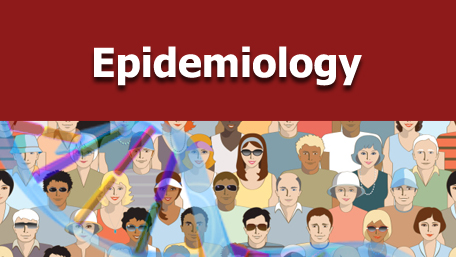Public Health Genomics. 2016 Sep 10;19(5). [Epub ahead of print]
Prevalence of Sickle Cell Trait and Reliability of Self-Reported Status among Expectant Parents in Nigeria: Implications for Targeted Newborn Screening.
Burnham-Marusich AR, Ezeanolue CO, Obiefune MC, Yang W, Osuji A, Ogidi AG, Hunt AT, Patel D, Ezeanolue EE.
Abstract
BACKGROUND/AIMS:
METHODS:
RESULTS:
CONCLUSIONS:
© 2016 The Author(s) Published by S. Karger AG, Basel.
- PMID:
- 27614873
- DOI:
- 10.1159/000448914
- [PubMed - as supplied by publisher]
Public Health Genomics Knowledge Base (v1.2)

SICKLE CELL DISEASE

Last Updated: Sep 15, 2016
- Prevalence of Sickle Cell Trait and Reliability of Self-Reported Status among Expectant Parents in Nigeria: Implications for Targeted Newborn Screening.
Burnham-Marusich Amanda R et al. Public health genomics 2016 Sep 19(5) - Public Health Research, Epidemiology, and Surveillance for Hemoglobinopathies (PHRESH)
- Sickle Cell Awareness
- Sickle Cell Data Collection (SCDC) Program
- Gene therapy for sickle cell moves closer as scientists clear unexpected obstacle
StatNews, September 7, 2016 - A genetic variation associated with plasma erythropoietin and a non-coding transcript of PRKAR1A in Sickle Cell Disease.
Zhang Xu, et al. Human molecular genetics 2016 8 - Sickle cell disease in western Sudan: genetic epidemiology and predictors of knowledge attitude and practices.
Daak Ahmed A et al. Tropical medicine & international health : TM & IH 2016 May 21(5) 642-53 - Progressing Preemptive Genotyping of CYP2C19 Allelic Variants for Sickle Cell Disease Patients.
Jaja Cheedy, et al. Genetic testing and molecular biomarkers 2016 8 - Getting out of a sticky situation
ML Hulbert, Science Trans Med, August 10, 2016 - Newborn screening and prophylactic interventions for sickle cell disease in 47 countries in sub-Saharan Africa: a cost-effectiveness analysis.
Kuznik Andreas et al. BMC health services research 2016 16(1) 304 - Physicians' Perception of Sickle-cell Disease Pain.
Lucchesi Fátima et al. Journal of the National Medical Association 2016 May 108(2) 113-118 - Pharmacogenetics for Safe Codeine Use in Sickle Cell Disease.
Gammal Roseann S et al. Pediatrics 2016 Jun - Sickle Cell Trait Screening of Collegiate Athletes: Ethical Reasons for Program Reform.
Ferrari Rosalie et al. Journal of genetic counseling 2015 Dec 24(6) 873-7 - Significant prevalence of sickle cell disease in Southwest Germany: results from a birth cohort study indicate the necessity for newborn screening.
Kunz Joachim B et al. Annals of hematology 2016 Feb 95(3) 397-402 - Developing a Unified Approach for Sickle Cell Disease
Am J Prev Pemd, July 2016



- Human (268)
- Pathogen (0)

- Human (54)
- Pathogen (0)

- Guidelines (2)
- Tier Table (0)
- Synthesis (5)

- Huamn (8)
- Pathogen (0)





















.png)












No hay comentarios:
Publicar un comentario